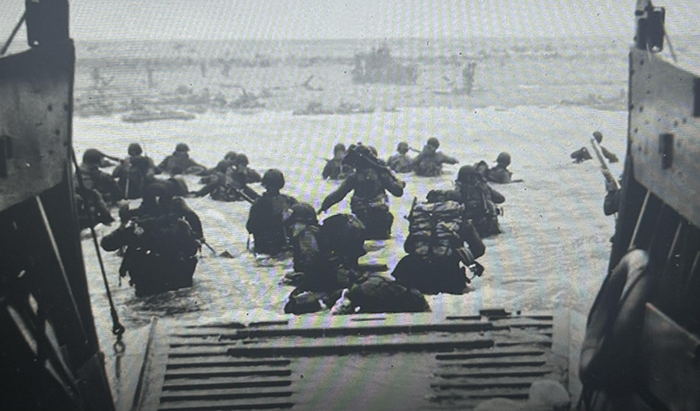From D-Day to Glendalough State Park
News | Published on June 13, 2024 at 3:48pm GMT+0000 | Author: Tucker Henderson
0
Allied Forces entering the beach at Normandy on June 6, 1944.
By Tom Hintgen
Otter Tail County Correspondent
On June 6, 1944, future President Dwight Eisenhower served as Supreme Allied Commander during World War II. He led the D-Day operation that brought together land, air and sea forces to the beaches of Normandy, France.
Eight years later, in September 1952, Eisenhower took a break from his presidential race with Adlai Stevenson to spend a couple days at Glendalough near Battle Lake, back then owned by executives of the Minneapolis Star-Tribune. The future president did some fishing at Annie Battle Lake.
Ike, during his stay at Glendalough, recalled D-Day which was referred to as Operation Overload, the amphibious invasion of Normandy across the English Channel. Ike lived with the price of freedom, remembering that more than 4,000 Allied deaths took place during D-Day, 80 years ago.
Renowned author Stephen Ambrose answers almost every question a person would ask about Ike in his book, “Eisenhower, Soldier and President.”
Said Ambrose, “Eisenhower hated war, but he hated Hitler more, and that stronger hatred drove him through Europe during World War II. As president he did not worry about his legacy. Eisenhower already had one.”
The author said that Ike was more prepared than many of his predecessors to become president, having been a world figure close to a decade before taking office as leader of the free world.
As president he preferred humble retreats such as Glendalough near Battle Lake, and renamed the rustic retreat near the nation’s capital as Camp David in honor of his grandson.
In 1956 Eisenhower signed legislation funding construction of the Interstate Highway System. A portion of the highway system runs through southwestern Otter Tail County.
Eisenhower made some tough decisions during his presidency, including upholding the rule of law in 1957. That year the governor of Arkansas defied a 1954 U.S. Supreme Court ruling calling for all public schools to be desegregated. Violence was on the horizon.
In response, Eisenhower placed the Arkansas National Guard under federal control and sent Army paratroopers to Little Rock. This ensured that nine African American students could enroll at Central High School, previously an all-white school.
Eisenhower, after he left office in 1961, retired with his wife, Mamie, to a small farm adjacent to the Civil War battlefield outside Gettysburg in Pennsylvania. Ike died in March 1969 and is buried in his home state of Kansas at the Eisenhower Presidential Library and Museum in Abilene.

